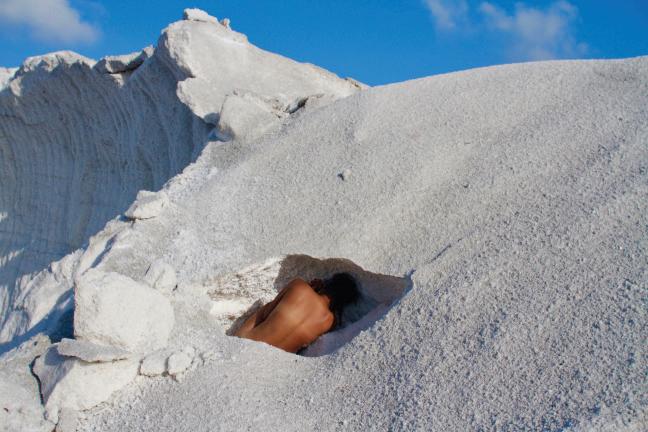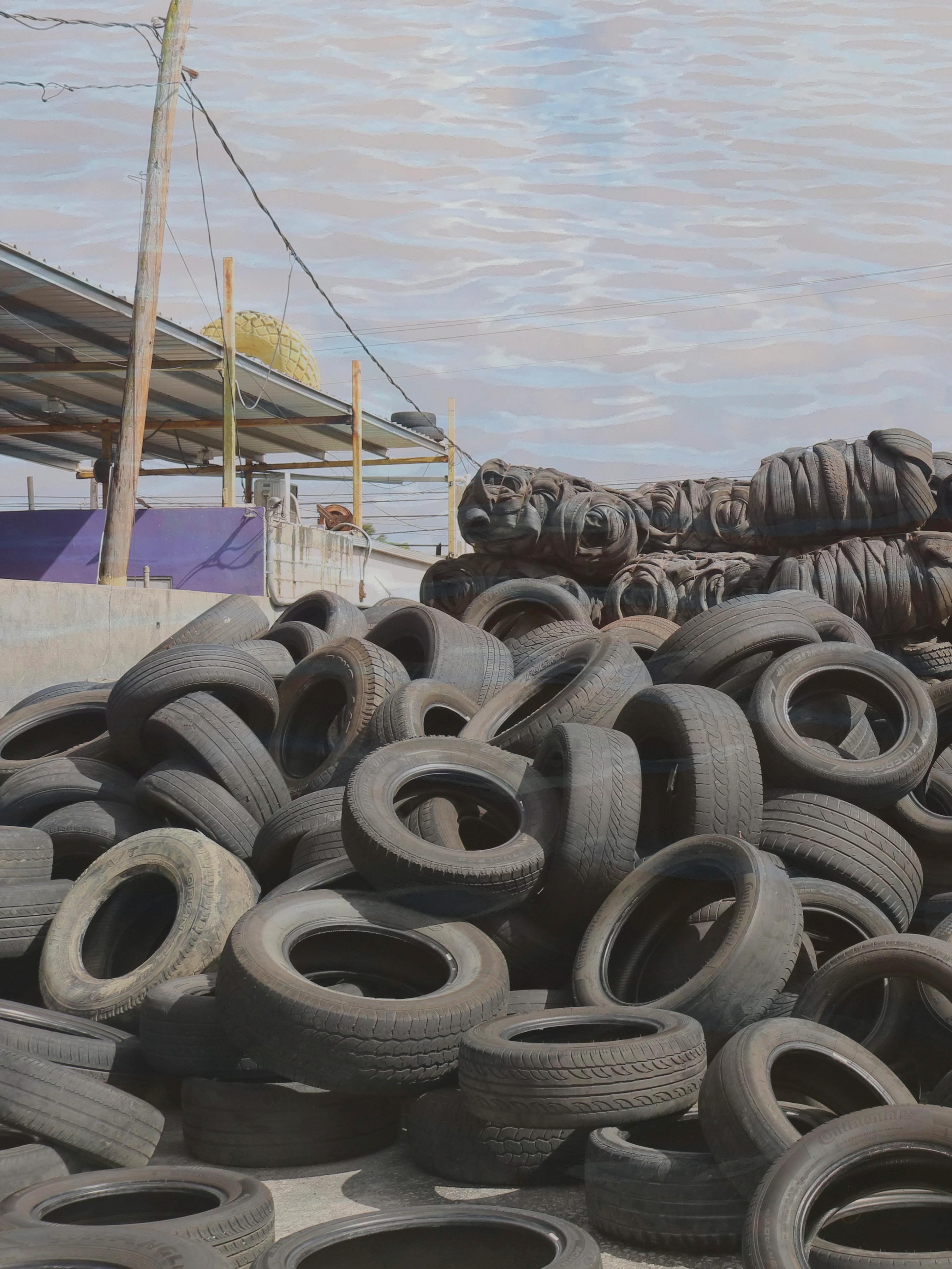PORTFOLIO
Las Nietas de Nonó
The afro-diasporic siblings, mulowayi and mapenzi are Las Nietas de Nonó. In their creative process, they evoke ancestral memory through personal archives. Their practice incorporates performance, found objects, organic materials, ecology, fiction, video and installation.
In 2022, their first solo show, Posibles Escenarios, Vol. 1 LNN was presented at Artists Space, New themes such as processes of expropriation and colonial violence against Black communities and the development of microhistories in relation to geopolitics.
They created Ilustraciones de la Mecánica in 2016 a multimedia installation that was later commissioned by the 10th Berlin Biennale (2018) and the 79th Whitney Biennial (2019). They have received the Latinx Artist Fellowship from the US Latinx Art Forum (2022), the Rome Prize in Visual Art from the American Academy in Rome (2022), the United States Artist Award (2018), The Art of Change from the Ford Foundation (2017), and the Global Arts Fund from the Astraea Lesbian Foundation for Justice (2017 & 2020). Their art has been shown in Haiti, Cuba, the Dominican Republic, Puerto Rico, Ecuador, England, Germany, Italy, Norway, Scotland, and the United States.
In 2019, they co-founded Parceleras Afrocaribenas, an organization run by Black womxn, where spaces for environmental and racial justice are created in the face of industrial developments that threaten their barrio of San Antón, in Carolina, Puerto Rico.
statement
geographical area, food starts running out and possibilities continue to shrink. The relationship beyour surroundings. As someone who observes her surroundings, which is another technology I use in my practice, I could take note of how observation can be mastered and how food can be found in places where in another context I would never have thought to find it. Your brain works differently. Collecting food is an active meditation that I developed and strengthened along with my smell and taste. Hunting is a powerful, arduous action, and through it I questioned everything that modernity, along with capitalism, has deprived us of. If we had to hunt to provide ourselves with all the meattal implications for the livestock industry. Hunting in order to eat is an act of resistance, but it is also a skill; sometimes I wonder if, along with gathering wild plants, I would do it to sustain myself for seasons on end. I am still unsure whether my evolution would depend on this action. When I turned to hunting, it came very organically to me. Really, I thought I already knew how to do it.
manifested in a highly theatrical ritualized form, developed from a creative space and with improvisational energy. In my childhood, traditional healing saved my life. I was a child who got sick a lot, and thanks to the signs of the cross, plant concoctions, and baths, I could get through these illnesses. These cures impressed me because they contained a fascinating scenic element, the deployment of objects, body movement, spectators giving proof of the healing, storytelling. Elements that form catharsis through repetition and movement. Ritual is present in our practice, and because of this we mapenzi
chibale nonóPosibles Escenarios Vol. 1 LNN, 2022
Artists Space, New York
Solo exhibition
Installation environments & performances
Black communities and the development of microhistories in relation to geopolitics. Throughout
cles to unveil silenced histories, it will double as a stage for a new theatrical performance premiering
Entering the main gallery of the polymorphous exhibition, visitors travel through a set of possible album tracklist, cycling through organic materials and the sound of rapid beats, rhythmic rap songs,
acy of colonialism and the current climate crisis... The exhibition as a whole can be read as a set of discursive platforms that reflect on issues of ecology, land, food autonomy, and to strategize about
- Danielle A. Jackonmixed media environment
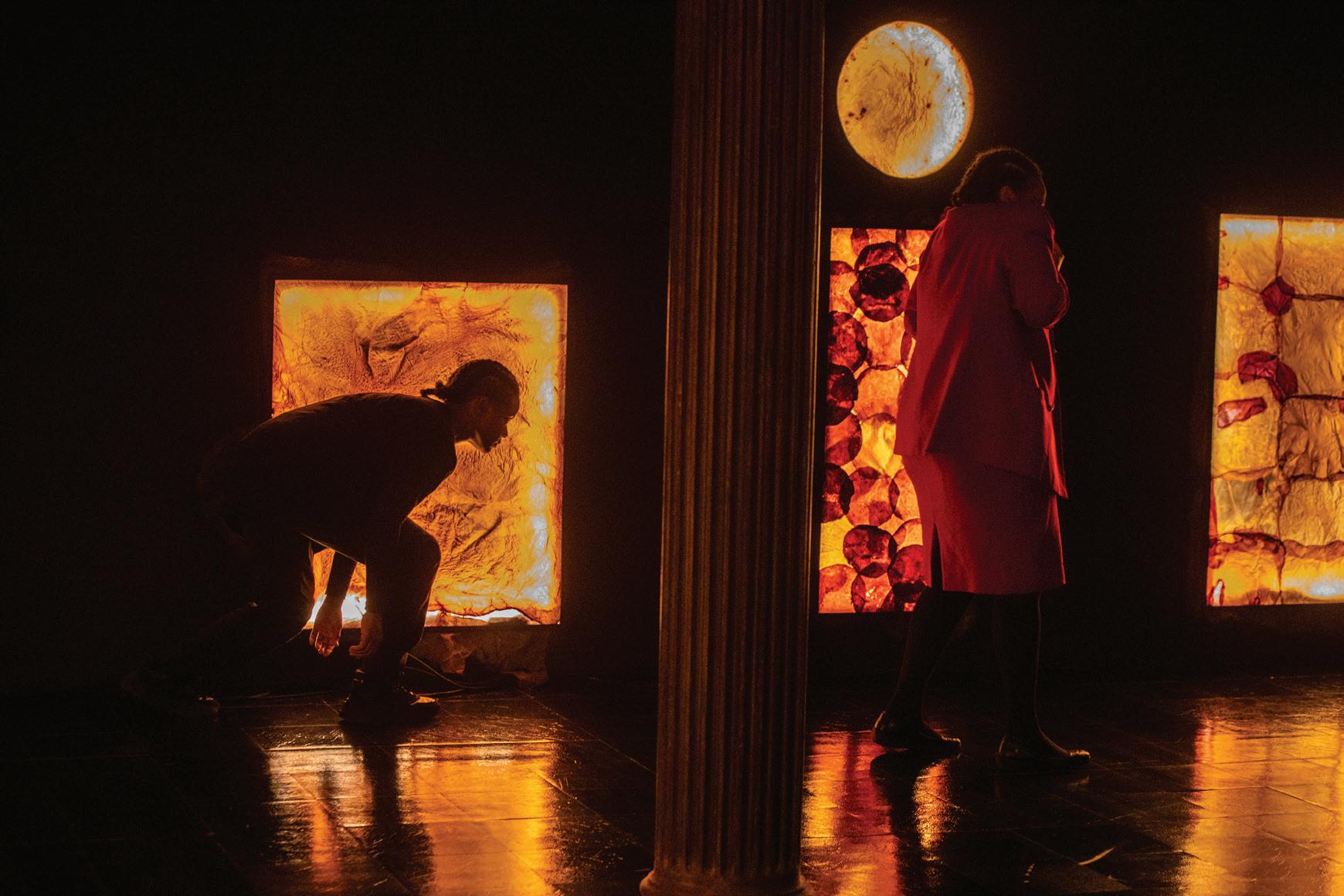
 (top) Photograph © Filip Wolak
(bottom) Photograph © Destiny Mata
(top) Photograph © Filip Wolak
(bottom) Photograph © Destiny Mata
Especie de archivo, 2022 mixed media environment
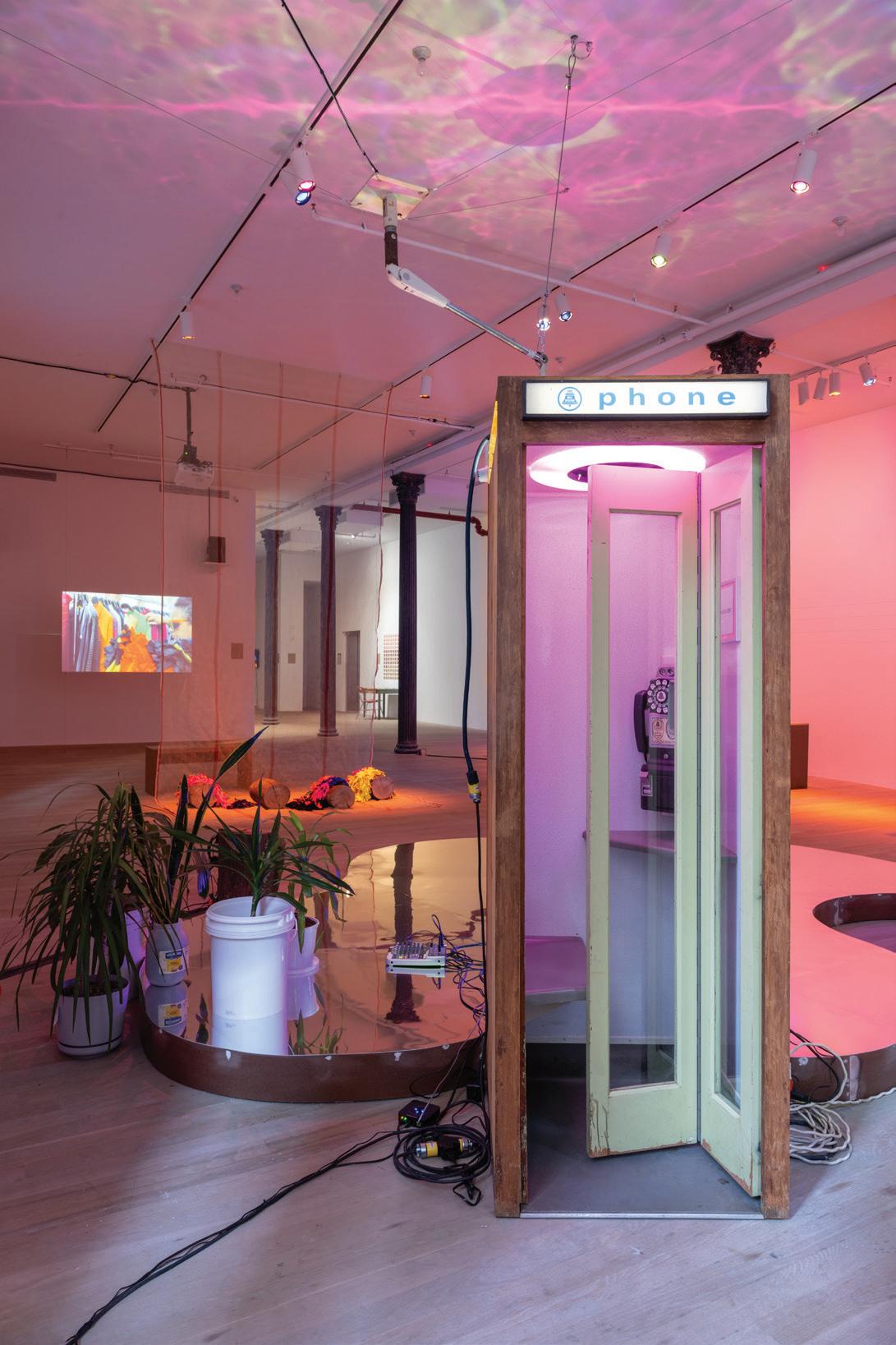
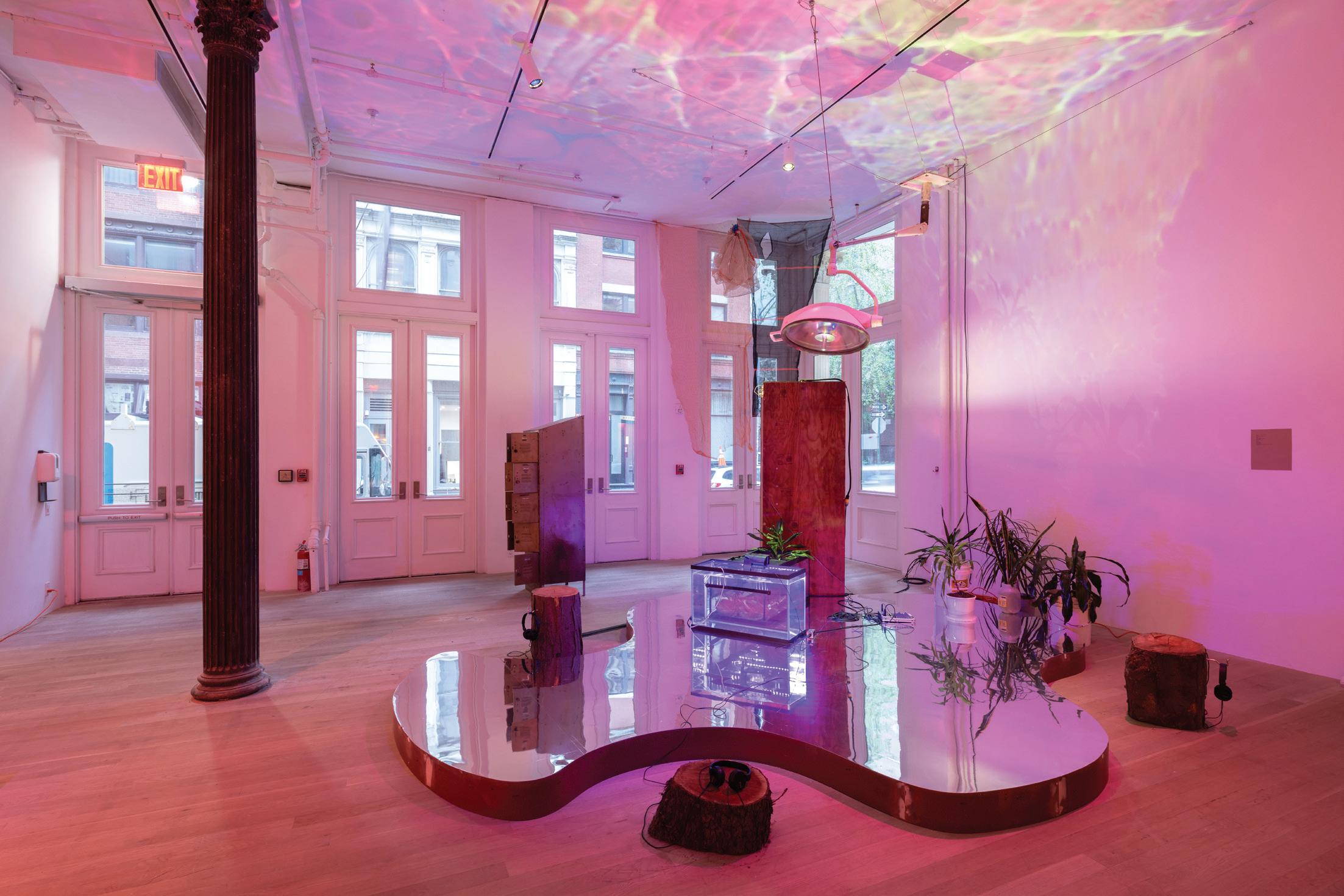 Photograph © Filip Wolak
Photograph © Filip Wolak
Especie de archivo, 2022 mixed media environment
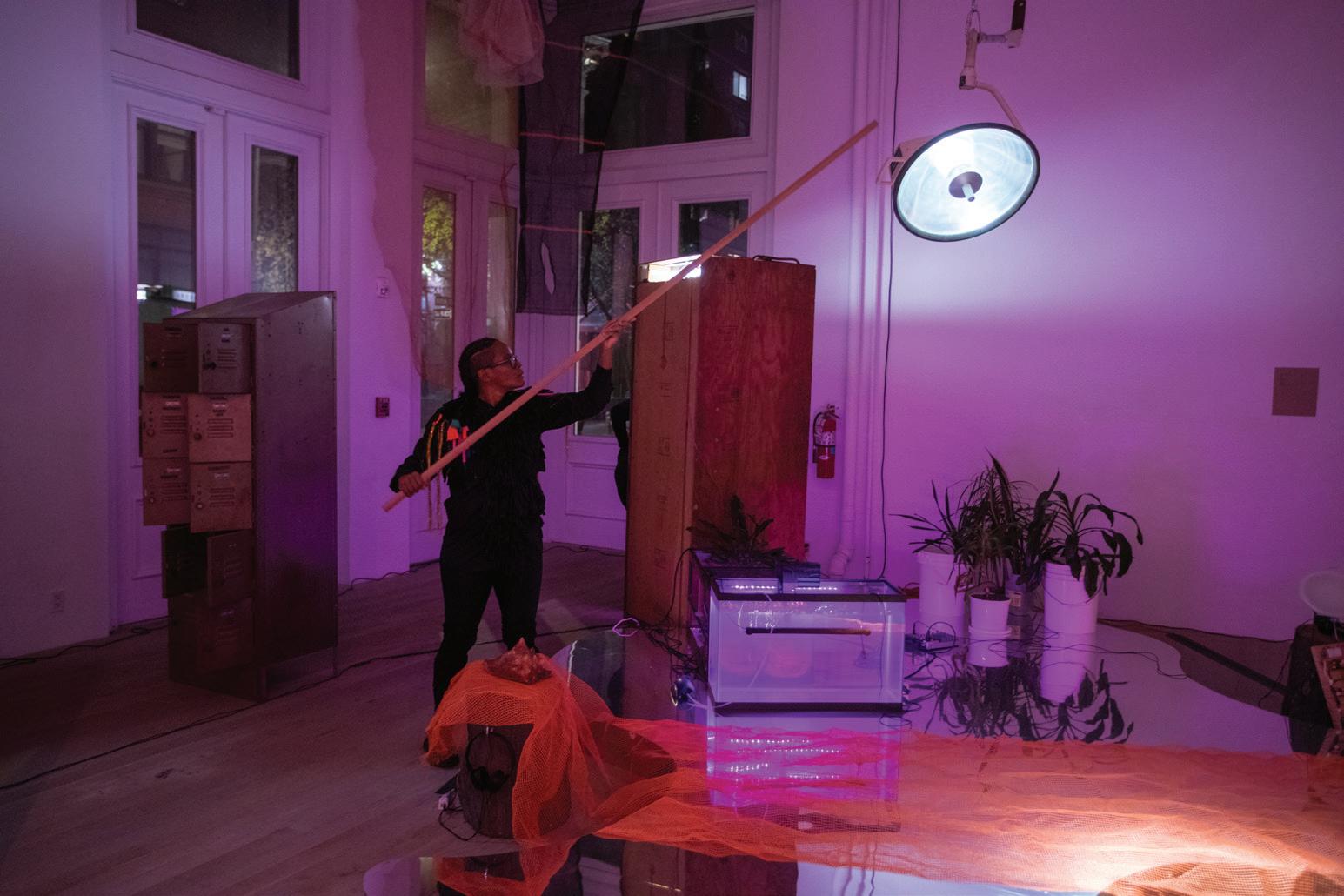
Photographs © Destiny Mata

The page you are looking for is not found., 2022 mixed media environment
 Photograph © Filip Wolak
Photograph © Filip Wolak
The page you are looking for is not found., 2022 mixed media environment

 (top) Photograph © Destiny Mata
(bottom) Photograph © Filip Wolak
(top) Photograph © Destiny Mata
(bottom) Photograph © Filip Wolak
No More Tears, 2021
No Humans Involved, Hammer Museum Group show curated by Erin Christovale with Vanessa Arizmendi
with their cousins the Salgado brothers, who were recently released after serving several years in federal prison. No More Tears is a meditation on the emotional and mental paradigm one grapples with during incarceration and how loss of physical and spatial freedom heightens the interior, invoking the realms of memory and dreams as survival mechanisms, a means to maintain personhood and connection to the outside world. The piece functions as a restorative
violent history of offshoring Puerto Rican inmates to private facilities in the United States, located thousands of miles away from the island. The piece is tied to Manual del Bestiario Domé
No More Tears, 2021 mixed media environment
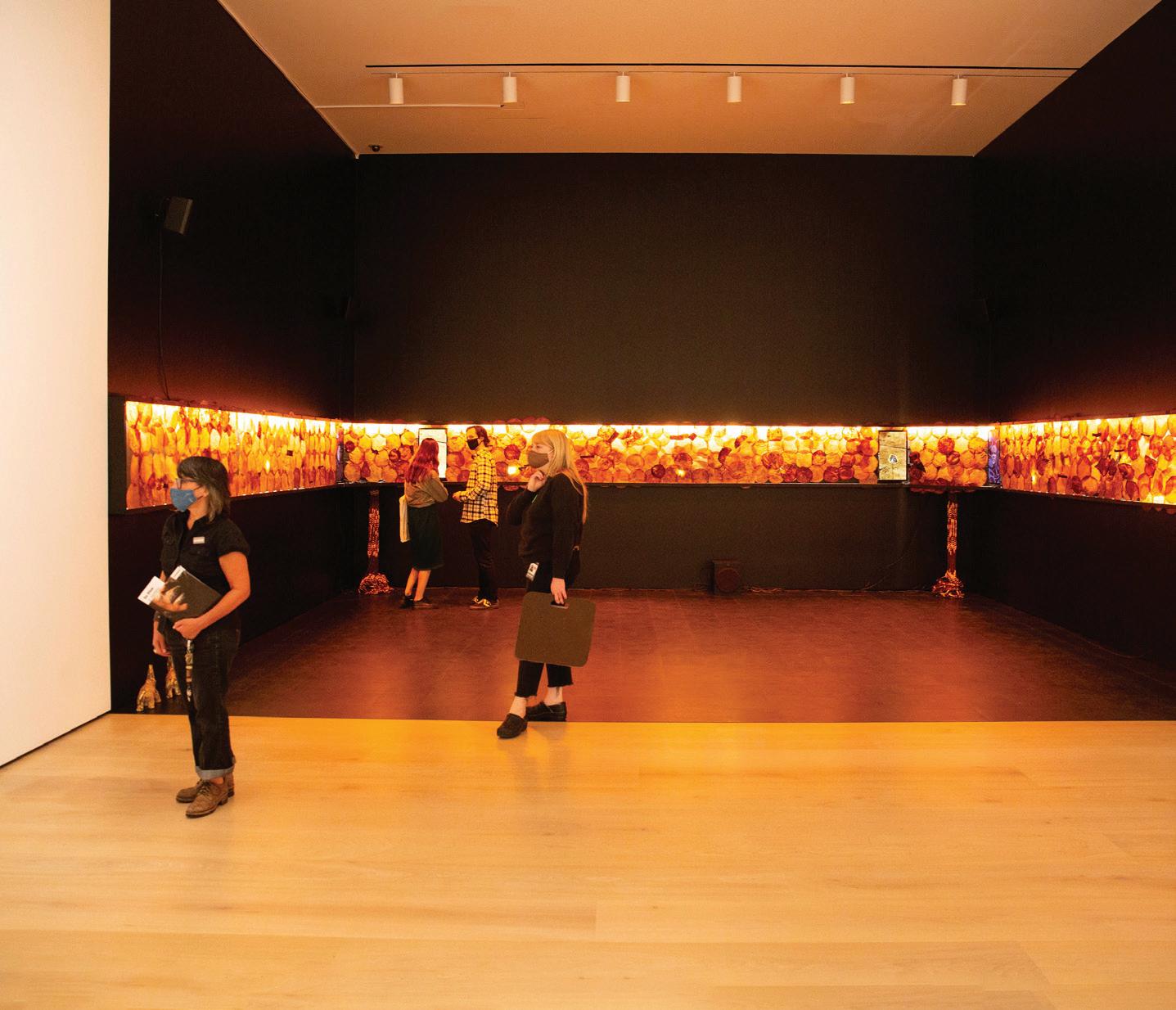
 (top) Photograph © Emanuela Bocse
(bottom) Photograph © Gina Clyne
(top) Photograph © Emanuela Bocse
(bottom) Photograph © Gina Clyne
No More Tears, 2021 mixed media environment
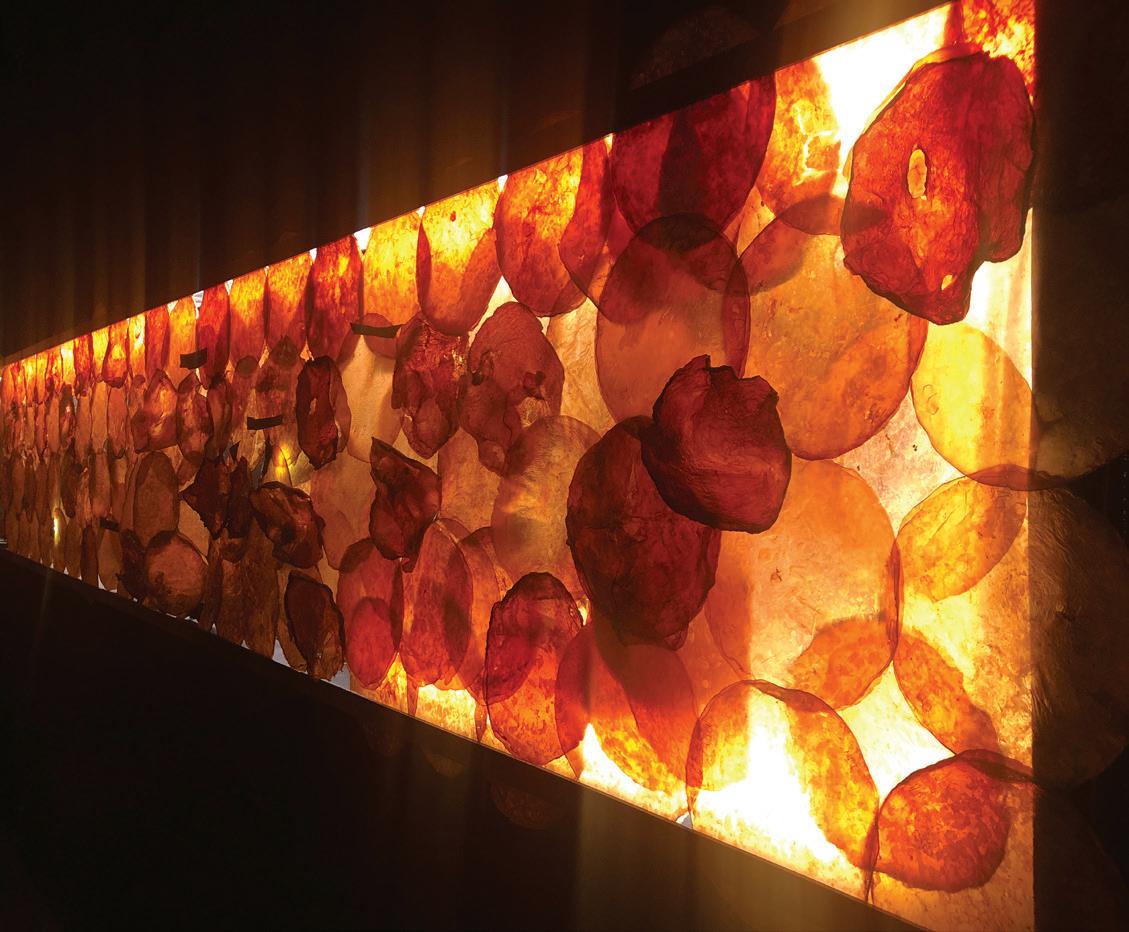

Ilustraciones de la Mecánica, 2016-2019
1 hour performance and multimedia installation
The performance is a multimedia installation that is the result of years of research inspired by our family archive. The disempowering experiences of women and Black communities are evoked through reenactments of massive non-consensual sterilizations and neoliberal heavy-handed policies against crime in Puerto Rico. The work powerfully addressed the U.S.-sanctioned sterilizations forced onto Black Puerto Rican women until the 1970s, tracing the arc between atrocity and healing.
The installation includes organic elements like vegetable leather, and plants are incorporated with technologies such as a stove, smartphones, a hair dryer and a home console, creating an imaginary landscape and a futuristic space that proposes decolonizing realities. The viewer becomes an accomplice as they are invited inside the installation, and eat food and drink kombucha.
79th Whitney Biennial Museum of American Art, New York Curated by Jane Panetta and Rujeko Hockley
 Ilustraciones de la Mecánica, 2016-19
Performed at the Whitney Museum of American Art
Photograph © 2019 Paula Court
Ilustraciones de la Mecánica, 2016-19
Performed at the Whitney Museum of American Art
Photograph © 2019 Paula Court

 Ilustraciones de la Mecánica, 2016-19
Performed at the Whitney Museum of American Art
Photograph © 2019 Paula Court
Ilustraciones de la Mecánica, 2016-19
Performed at the Whitney Museum of American Art
Photograph © 2019 Paula Court
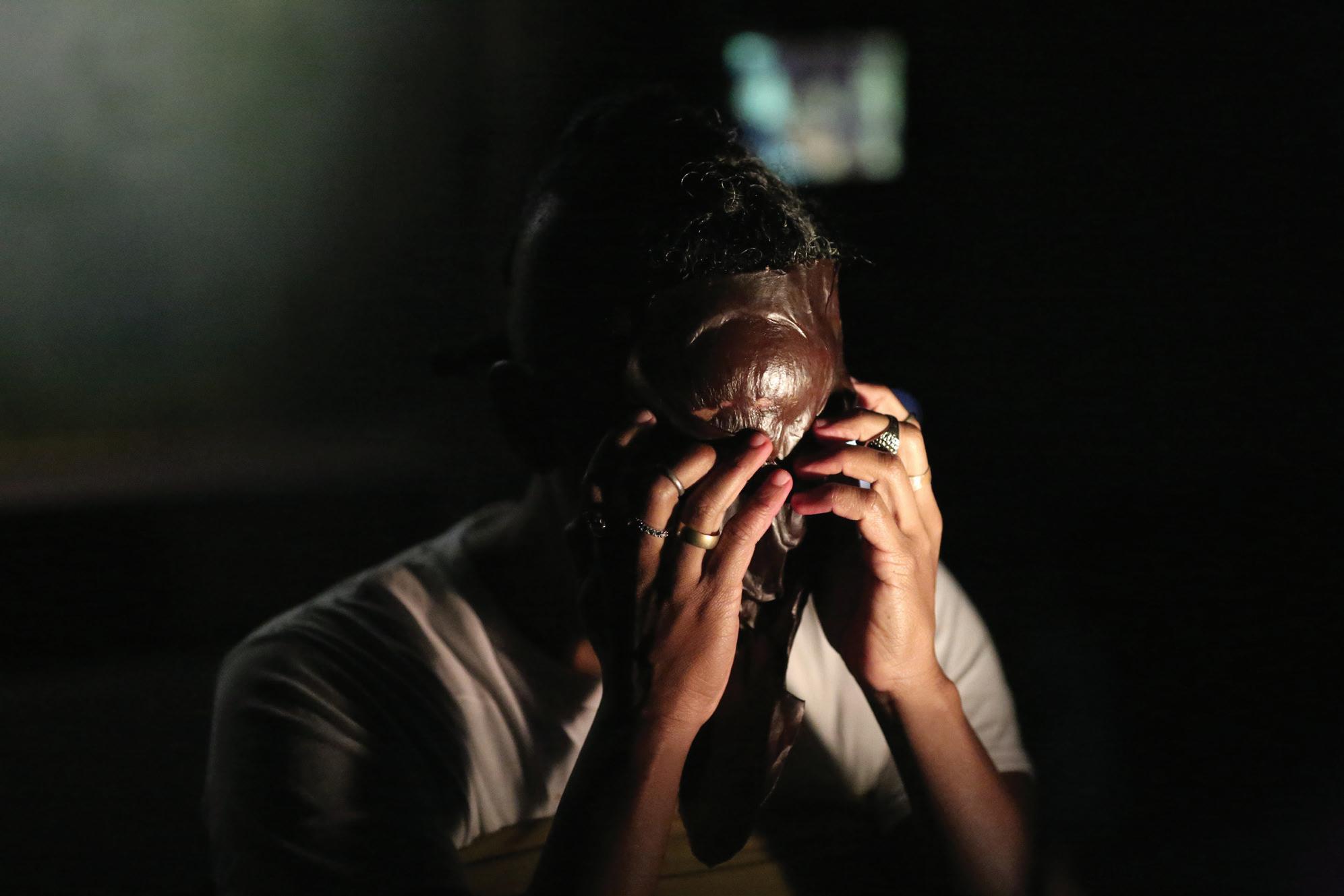
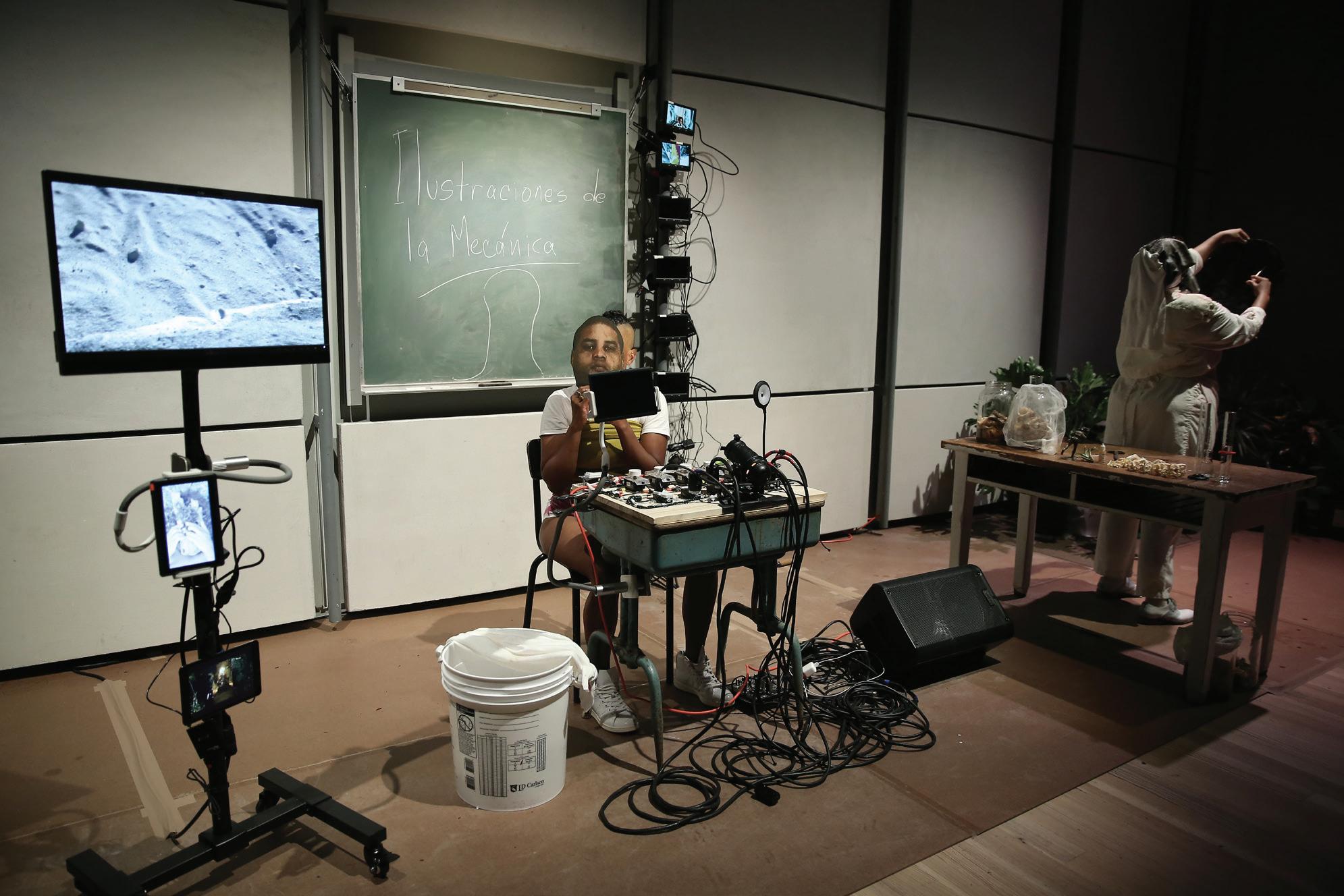 Ilustraciones de la Mecánica, 2016-19
Performed at the Whitney Museum of American Art
Photograph © 2019 Paula Court
Ilustraciones de la Mecánica, 2016-19
Performed at the Whitney Museum of American Art
Photograph © 2019 Paula Court
Ilustraciones de la Mecánica, 2016-19
Performed at the Whitney Museum of American Art
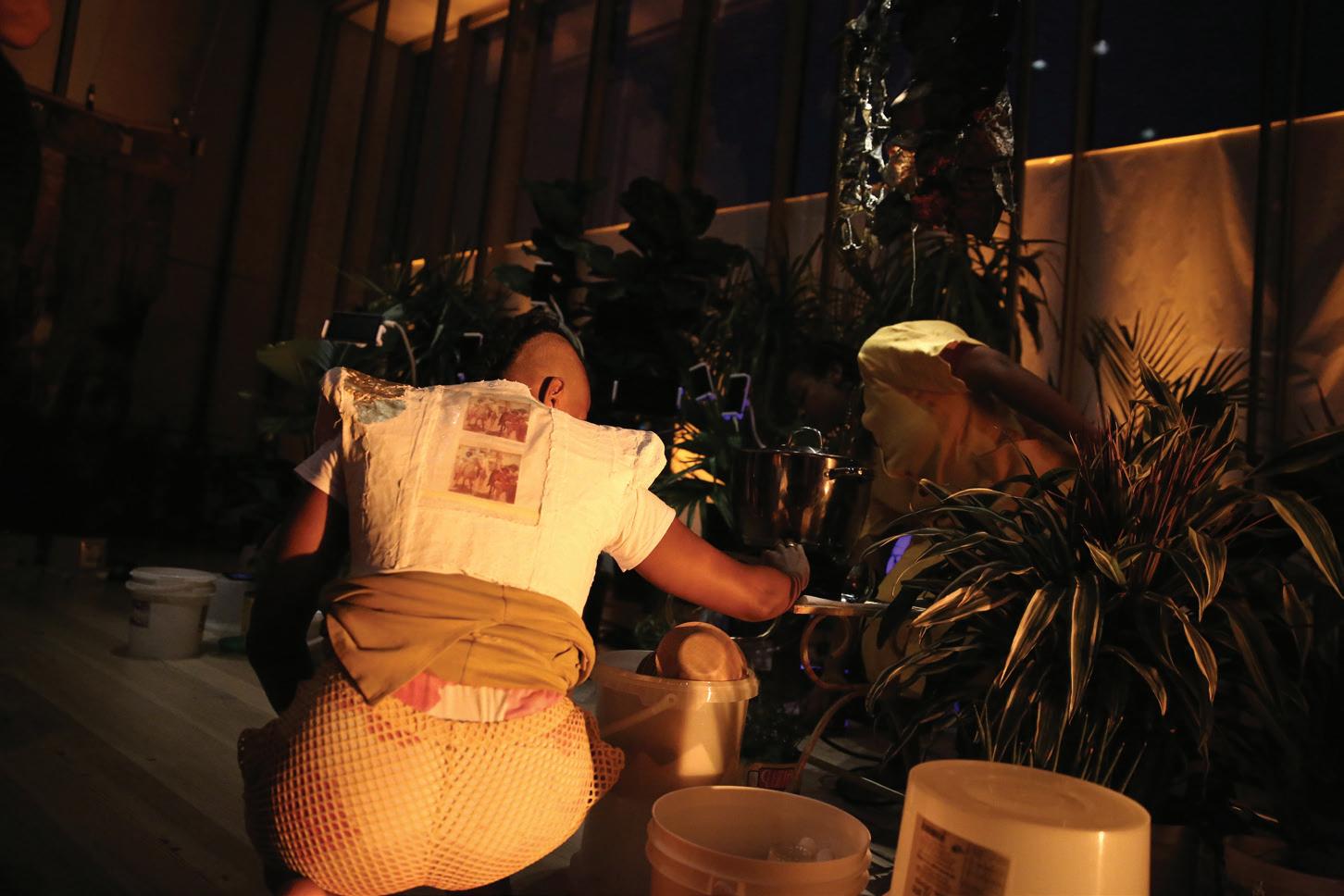
Photograph © 2019 Paula Court

Ilustraciones de la Mecánica, 2016-19
Performed at the Whitney Museum of American Art
Photograph © 2019 Paula Court
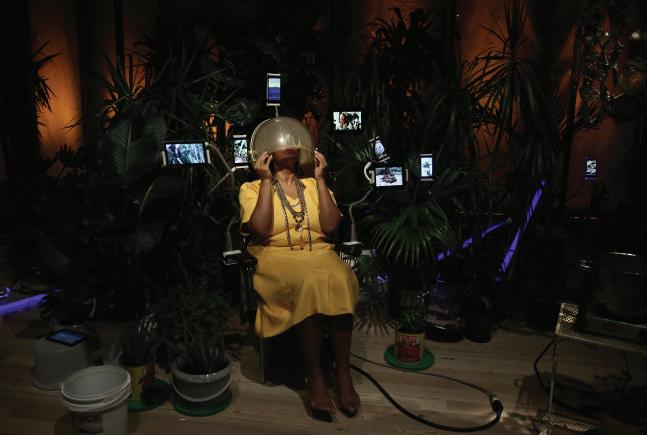
Ilustraciones de la Mecánica, 2018 performances & mixed media installation
10th Berlin Biennale, Curated by Gabi Ngcobo Volksbuhne Pavilion, Berlin, Germany

Ilustraciones de la Mecá installation view Volksbuhne Pavilion, 10th Berlin Biennale for Contemporary Art
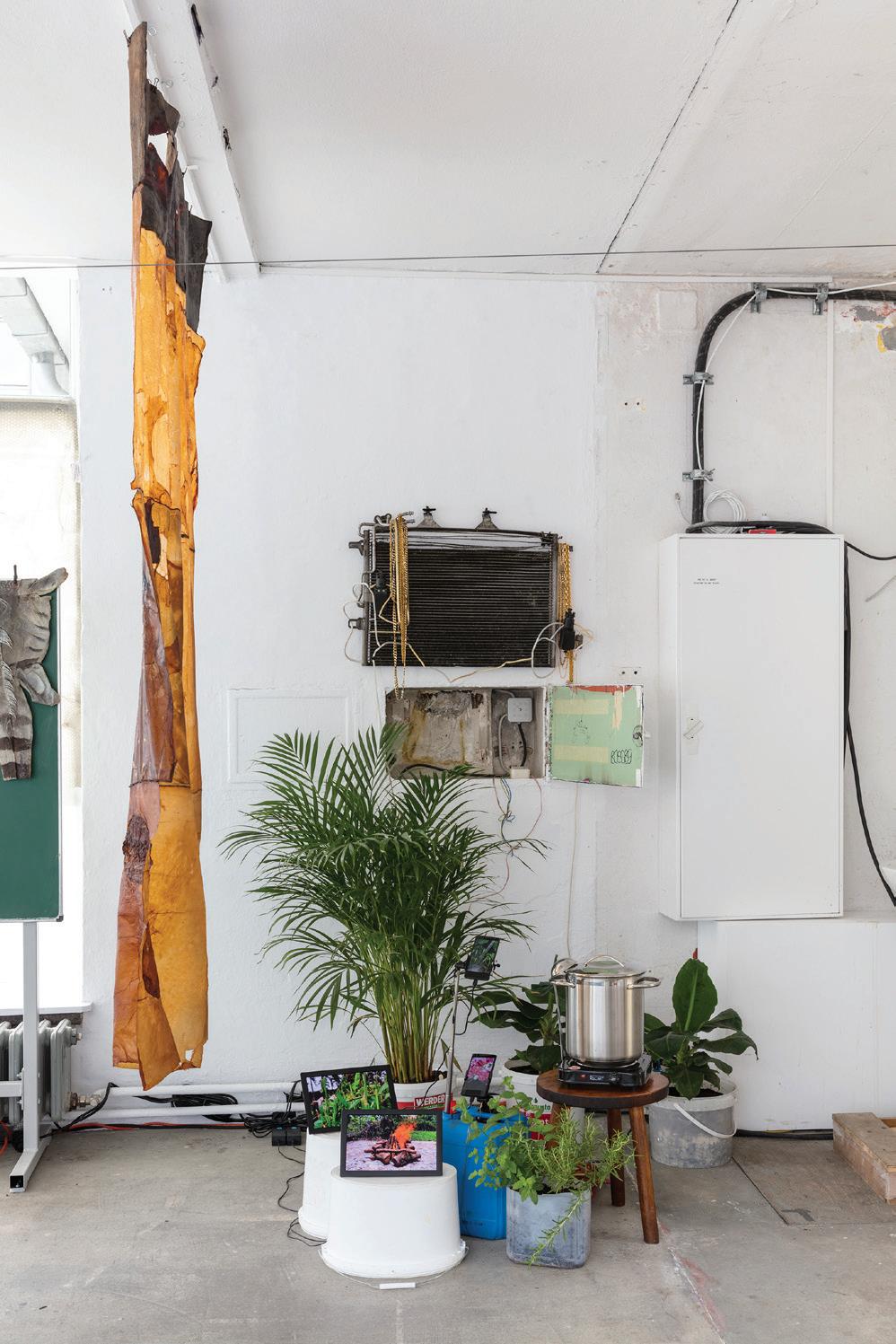
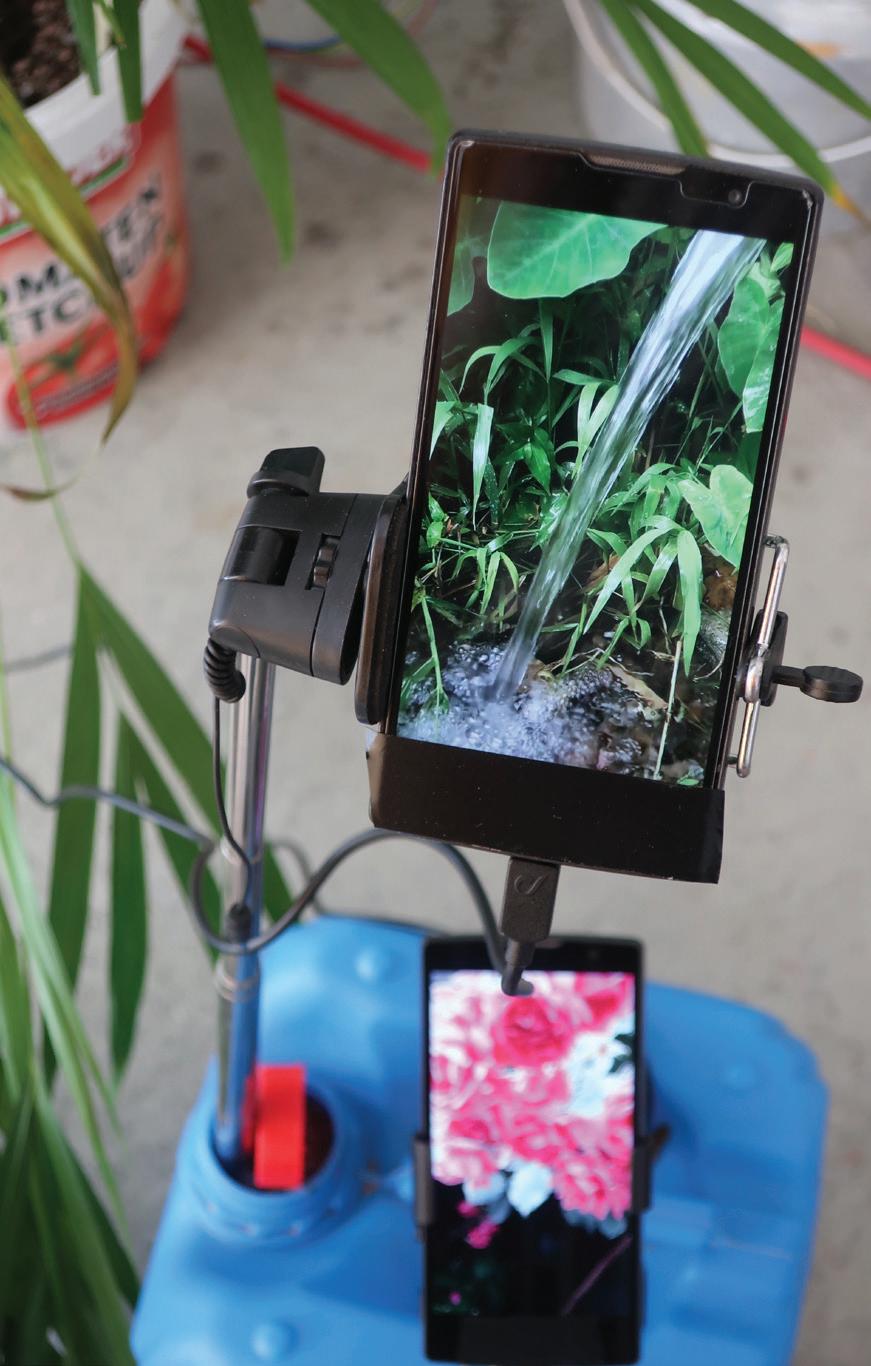
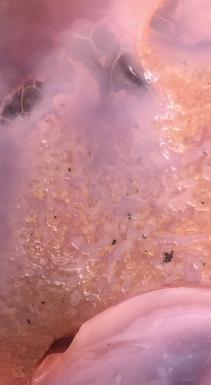

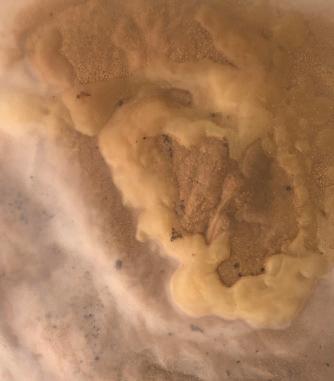 Sample of symbiotic culture of bacteria and yeast from vegetable leather (2018)
Sample of symbiotic culture of bacteria and yeast from vegetable leather (2018)
Vegetable Leather, 2018 (dimensions variable)
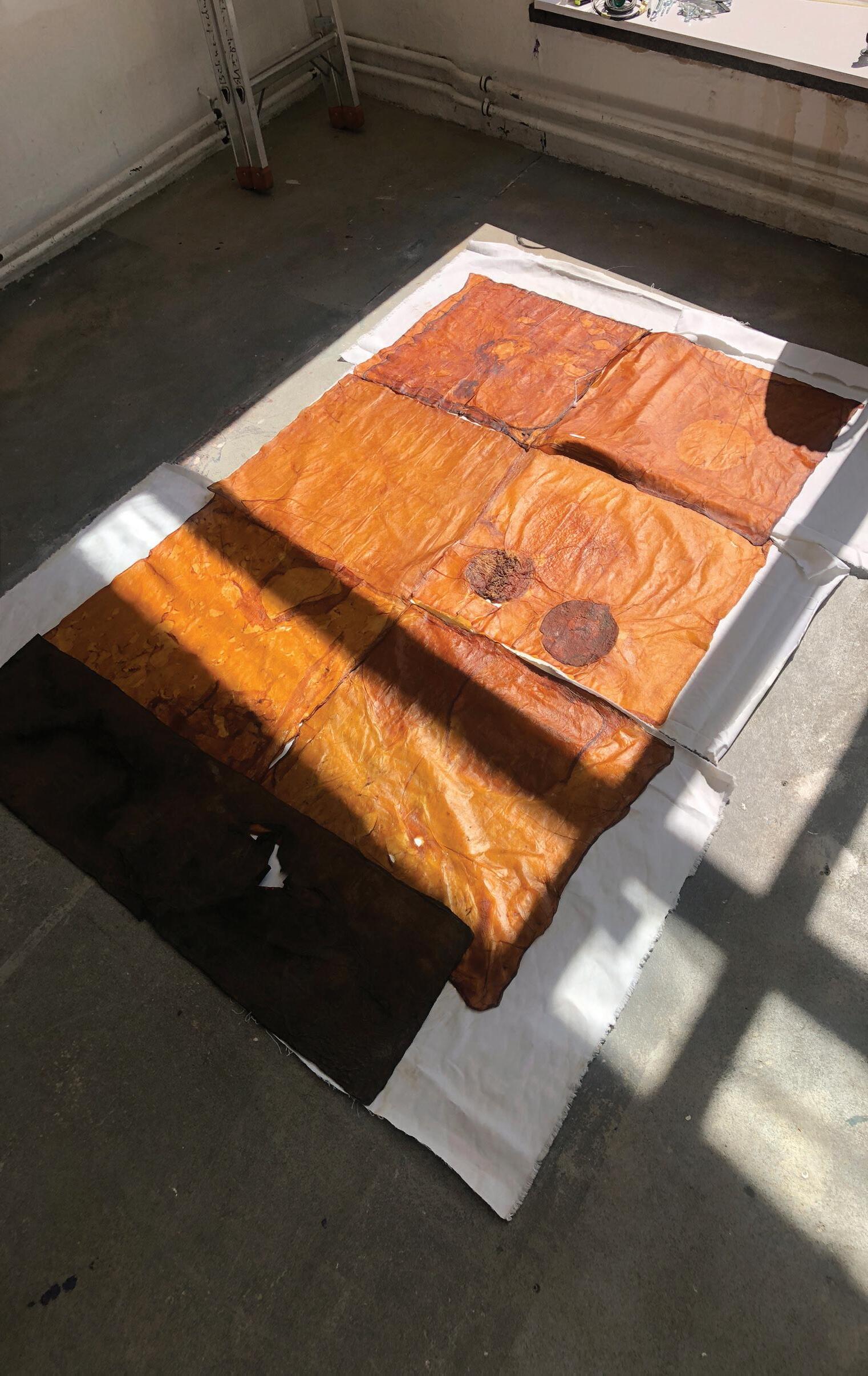
Posibles Escenarios Vol. 1 LNN, Artists Space
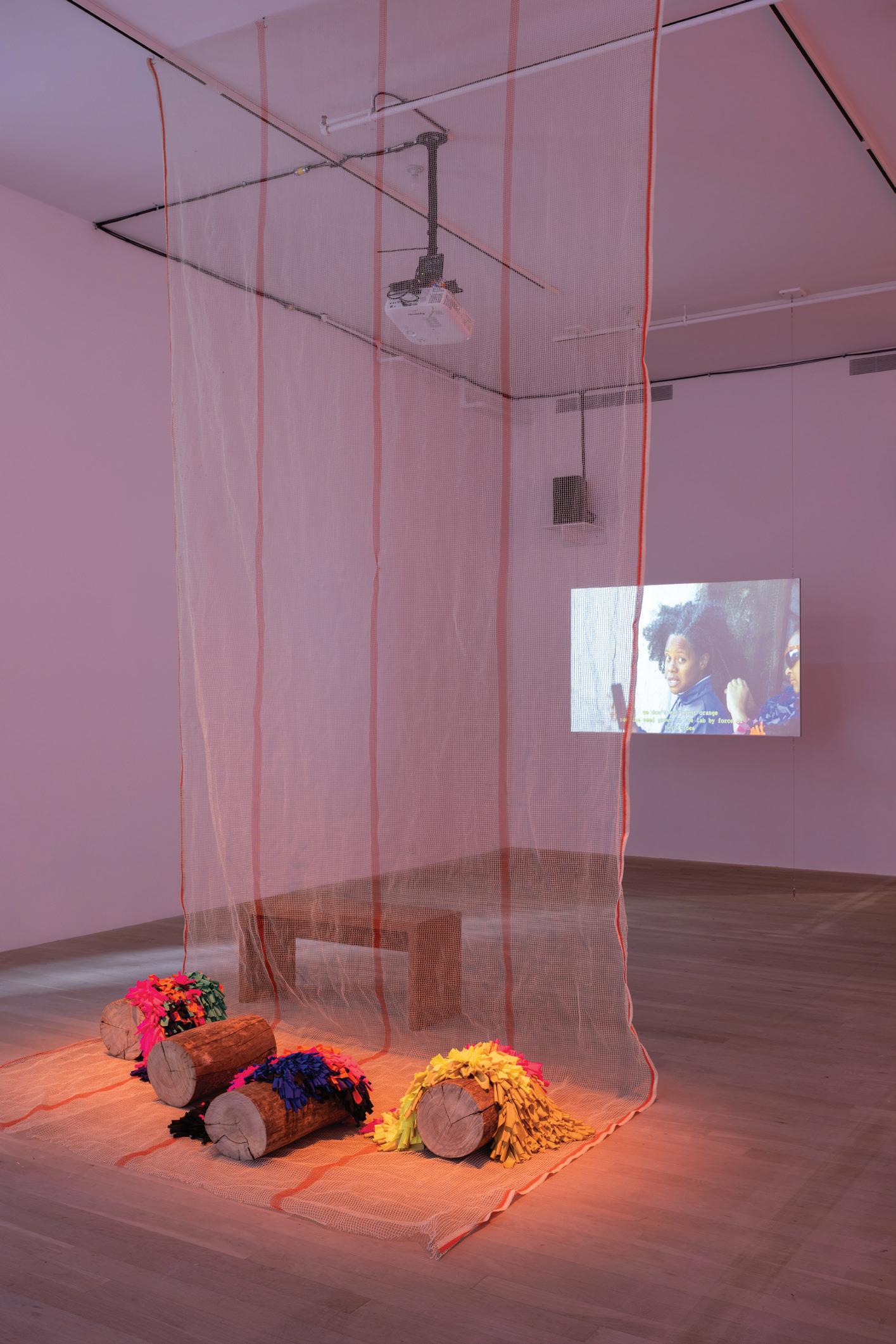 Photograph © Filip Wolak
Photograph © Filip Wolak

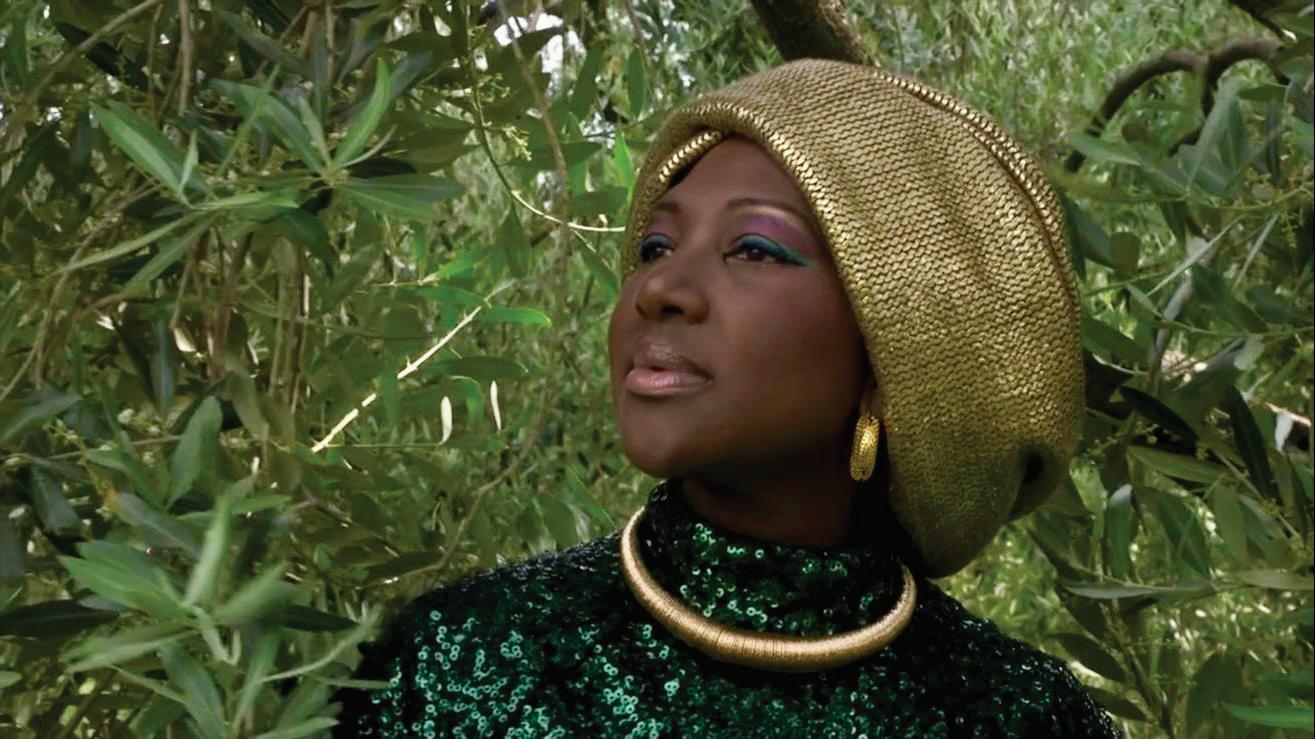
és de todo territorio, 2021 digital film
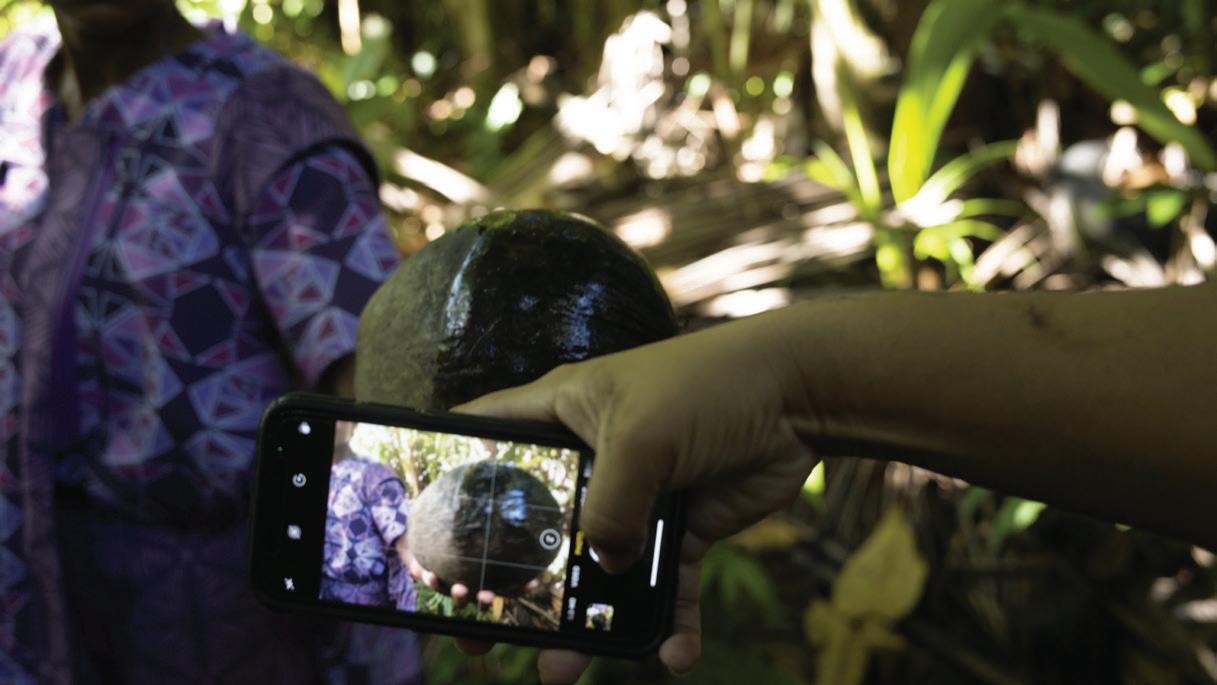
és de todo territorio, is part of a larger multimedia project where Las Nietas de Nonó explore the topic of over-industrialization of food and harvesting in the Caribbean. Mulowayi & Mapenzi are shown confronting and reflecting upon the history of industrial violence by exploring the Blasina stream, a natural space threatened by development and water extraction located near their home in the San Antón barrio. This film & durational performance hybrid piece demonstrates the siblings walking through abandoned buildings and streams filled with debris, harvesting wild fruits such as coconut and starfruit, hunting an invasive species of iguana, and cooking a meal with the gathered food. These moments were captured during peak pandemic times, where supermarkets and Nietas de Nonó reflect upon the conditions of both utopia and dystopia that they have to face as inhabitants of an island-colony. Acquired by The Museum of Modern Art, New York for the Twenty First Century, 2022

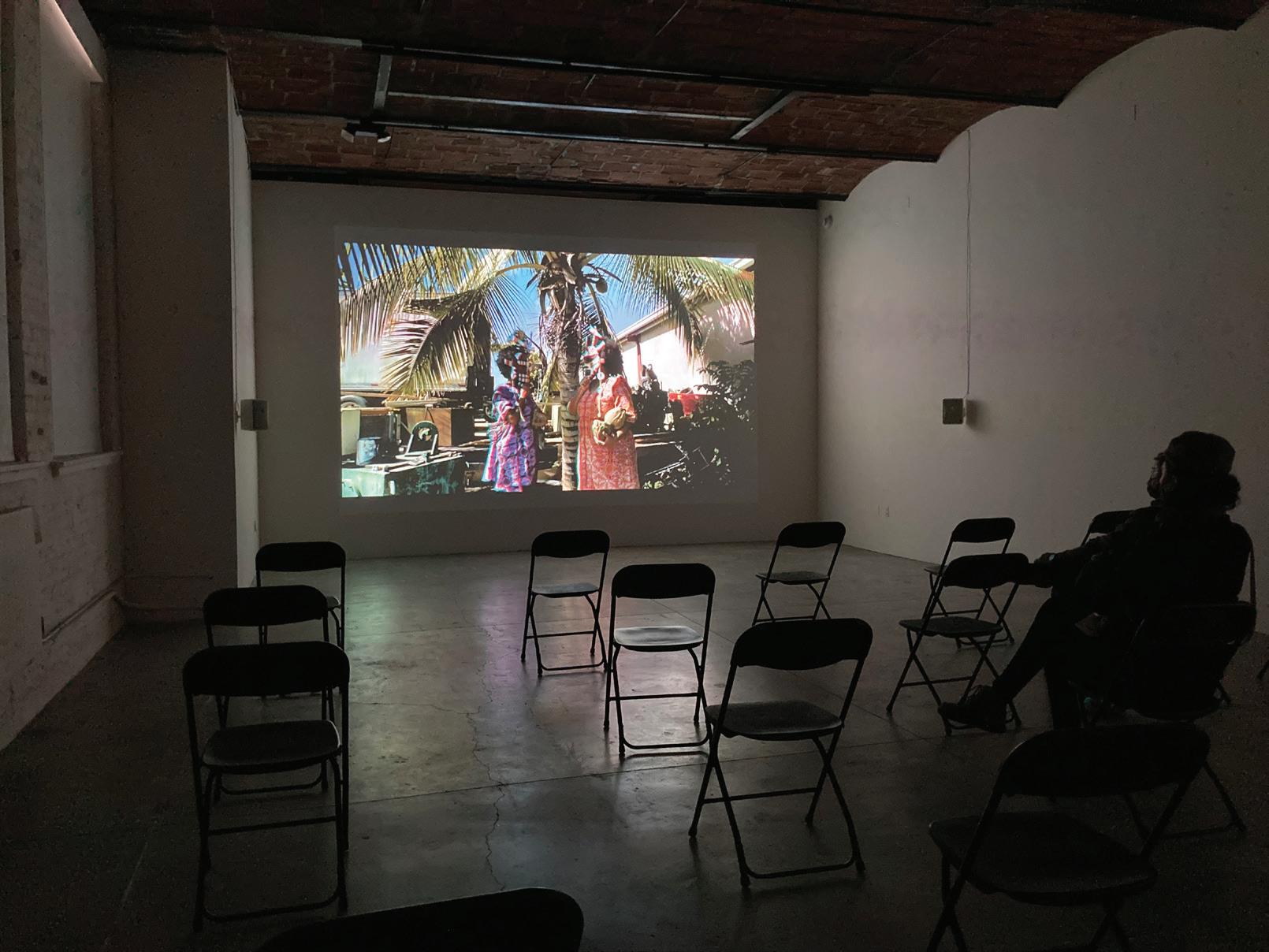
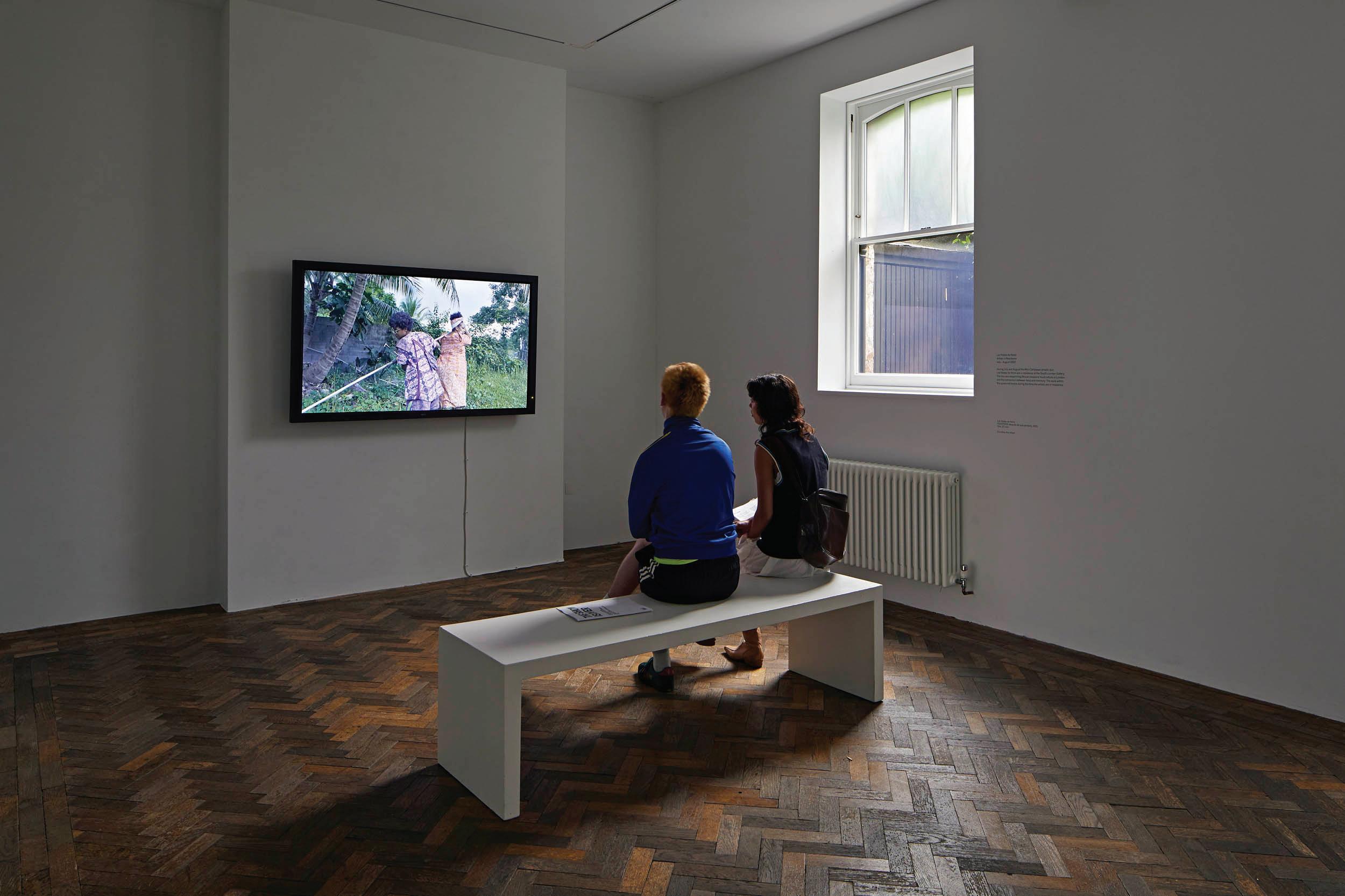 és de todo territorio
Greater New York, MoMA PS1 Group show curated by Ruba Katrib, Serubiri Moses, Kate Fowle, Ines Katzenstein
és de todo territorio
és de todo territorio
Greater New York, MoMA PS1 Group show curated by Ruba Katrib, Serubiri Moses, Kate Fowle, Ines Katzenstein
és de todo territorio
és de todo territorio, 2020 Raiz, CAC Quito, Ecuador
This multimedia project is documented with photos, video and are performative and ritualistic events. It is an exploration of food sustainability. This series of é
Las Nietas de Nonó worked on production and costume design to accompany this
of food and harvesting. This series of images were taken in the Blasina stream, a natural space threatened by development and water extraction. The fruits and objects were found in the area as part of their daily walks in recognition of space.
és de todo territorio, 2020 multimedia project, digital photography installation view

 Group show co-curated by Eduardo Carrera and Jorge Sánchez
Group show co-curated by Eduardo Carrera and Jorge Sánchez
Meal Ready To Eat 2018 digital photography
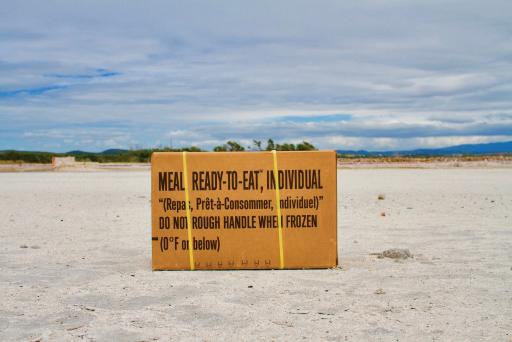
Preparasyon ke mankai fiwa ba la guerra, 2021
online group exhibition curated by Danielle Roper
Preparasyon ke mankai fiwa ba la guerra is a multimedia project of fictional autobiography. In this current piece, it includes photography, sound, and text. The project arose out of a
we realized a photographic series in a collection center of the neighborhood of San Antón, Carolina that manifests the displacement and accelerated industrialization of our community. The landscape of our familial plots of land, cultivated by our ancestors, changes dramatically with the takeover of these grounds by the metal industry, water extraction, automotive residues, and the accumulation of used tires. In this dimension, we explore the dynamics of environmental racism. With this scenario of the tire center, we present the characters of Ayín and Yenza as they travel in time to detect the magnitude of the problem of accumulated tires in the community of Guaru.
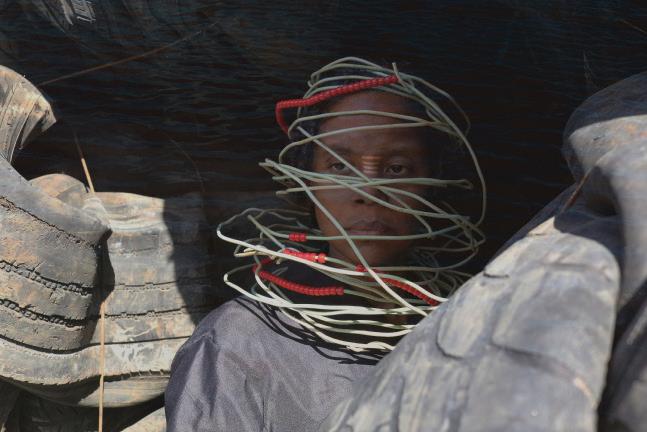
 Preparasyon ke mankai fiwa ba la guerra, 2021 multimedia project, digital photography
Preparasyon ke mankai fiwa ba la guerra, 2021 multimedia project, digital photography
Interpretaciones de la Sal, 2016-2020 digital video
The piece is a video of salt flats of Cabo Rojo, Puerto Rico. It is a visual and sonic exploration that interprets the mysteries of a place that has a history of extraction and exploitation of its resources. Mapenzi nonó is shown using their body to interact with the salt flats, pointing to a physical labor involved in the history of slavery and colonization. The video is a precursor of our venture into filmic and cinematographic techniques.
Today, Cabo Rojo is still used for commercial salt extraction by a private operator, though the property is owned and operated by the U.S. Fish and Wildlife Service. Las Nietas de Nonó points to the physical labor involved in slavery and colonization.
Interpretaciones de la Sal, 2016 digital video still
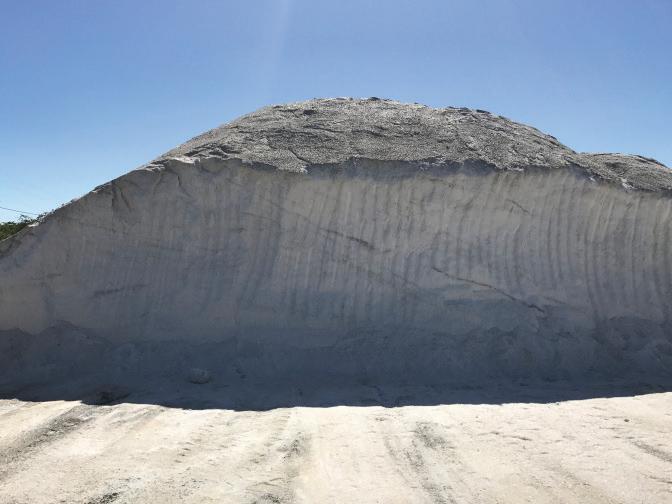
installation view Group show curated by Alaya & Thulani Transmission Gallery, Glasgow, Scotland, UK
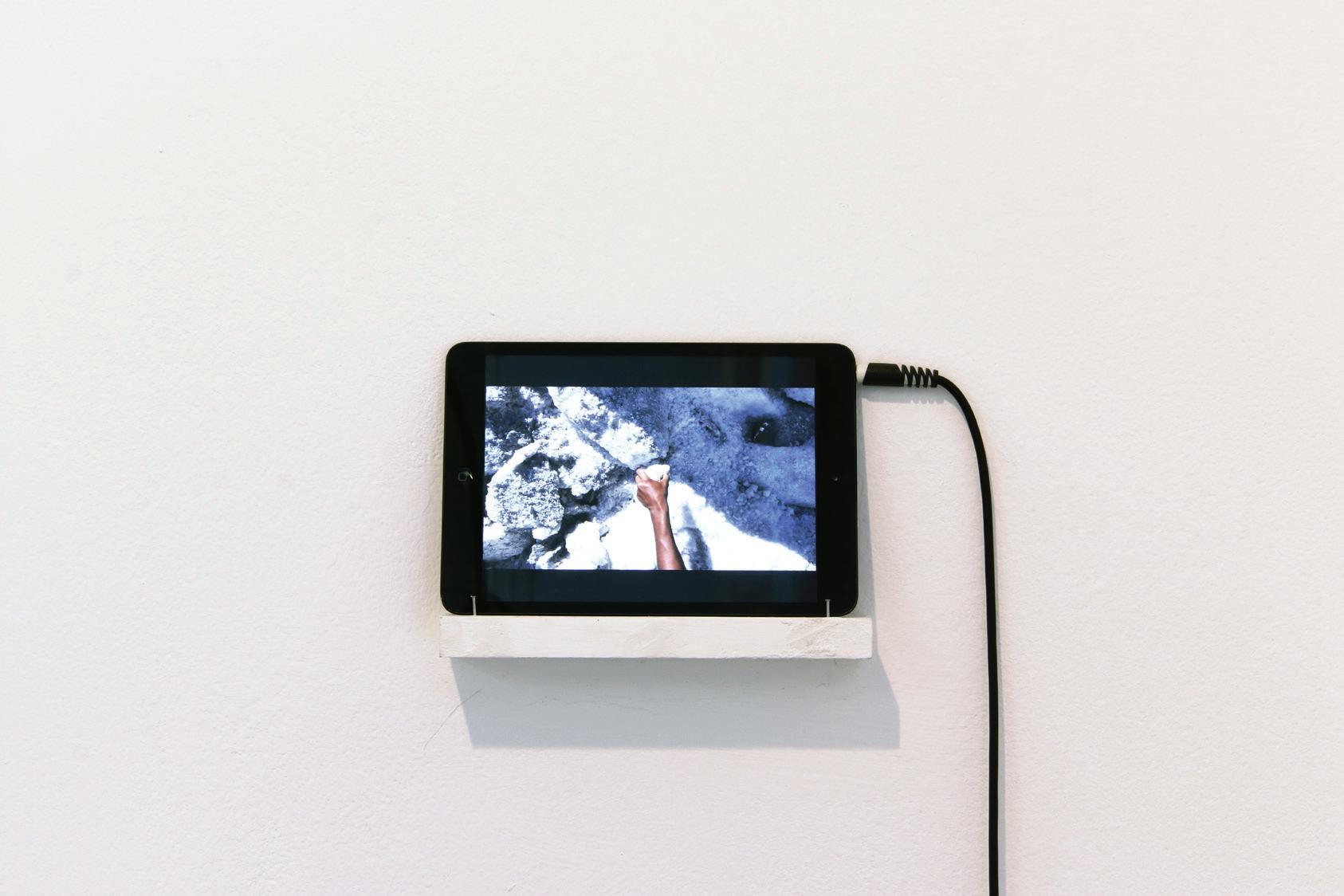
This photograph is a continuation of the Interpretaciones de la Sal project. Pictured is a Black queer body nested in a fetal position in a Cabo Rojo salt flat. It is the joining of human and environmental exploitation brought by colonialism.
